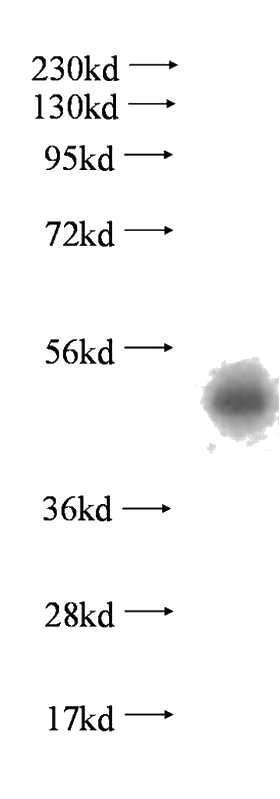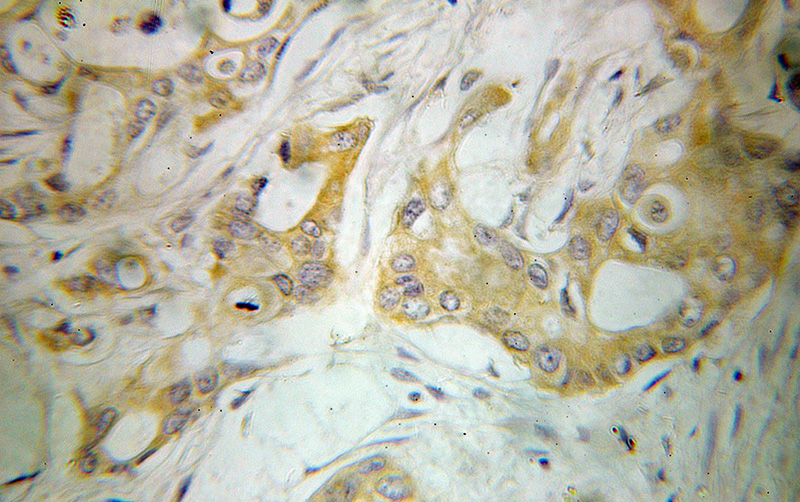-
Product Name
PLEKHA1 antibody
- Documents
-
Description
PLEKHA1 Rabbit Polyclonal antibody. Positive IHC detected in human pancreas cancer tissue. Positive WB detected in human placenta tissue, Jurkat cells. Observed molecular weight by Western-blot: 46 kDa
-
Tested applications
ELISA, WB, IHC
-
Species reactivity
Human,Mouse,Rat; other species not tested.
-
Alternative names
PLEKHA1 antibody; TAPP 1 antibody; TAPP1 antibody
- Immunogen
-
Isotype
Rabbit IgG
-
Preparation
This antibody was obtained by immunization of PLEKHA1 recombinant protein (Accession Number: XM_017016481). Purification method: Antigen affinity purified.
-
Clonality
Polyclonal
-
Formulation
PBS with 0.1% sodium azide and 50% glycerol pH 7.3.
-
Storage instructions
Store at -20℃. DO NOT ALIQUOT
-
Applications
Recommended Dilution:
WB: 1:200-1:2000
IHC: 1:20-1:200
-
Validations

human placenta tissue were subjected to SDS PAGE followed by western blot with Catalog No:113955(PLEKHA1 antibody) at dilution of 1:500

Immunohistochemical of paraffin-embedded human pancreas cancer using Catalog No:113955(PLEKHA1 antibody) at dilution of 1:100 (under 25x lens)
-
Background
Pleckstrin homology (PH) domain is commonly found in eukaryotic signaling proteins and possesses multiple functions including the abilities to bind inositol phosphates and various proteins. The tandem PH domain containing protein-1 (TAPP1) or PH domain containing-family A (phosphoinositide binding specific) member 1 (PLEKHA1), interacts strongly and specifically with phosphatidylinositol 3,4-trisphosphate [PtdIns(3,4)P(2)], which is one of the immediate breakdown products of PtdIns(3,4,5) P (3) and functions as a signalling molecule in insulin- and growth-factor-stimulated pathways. TAPP1 is also associated with the protein- tyrosine-phosphatase-like protein-1 (PTPL1 also known as FAP-1) and maintains PTPL1 in cytoplasm. By binding to PtdIns(3,4) P (2) and PTPL1, TAPP1 may regulate the membrane localization of PTPL1."
Related Products / Services
Please note: All products are "FOR RESEARCH USE ONLY AND ARE NOT INTENDED FOR DIAGNOSTIC OR THERAPEUTIC USE"
